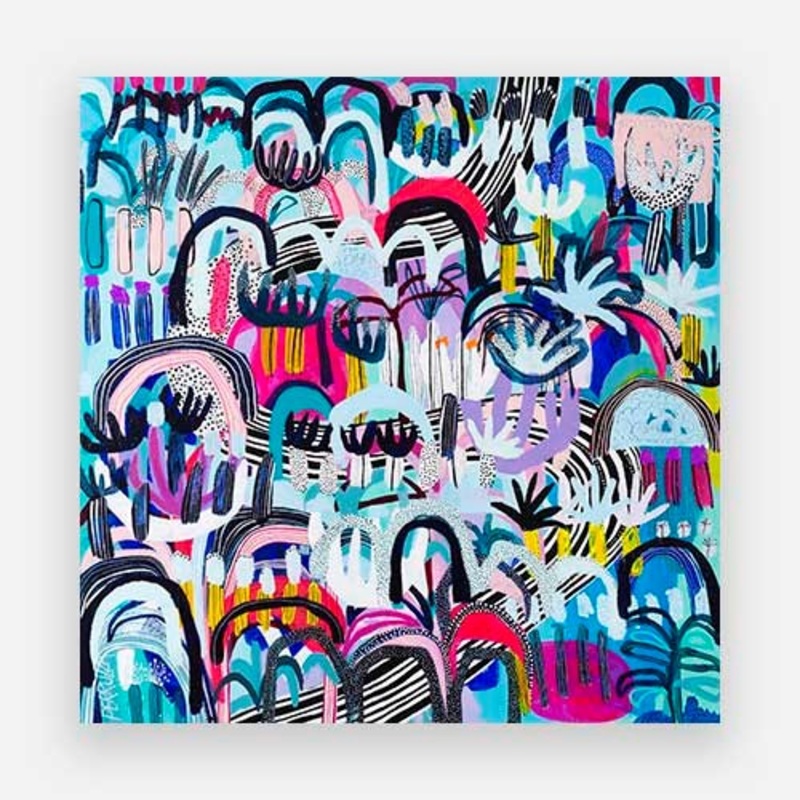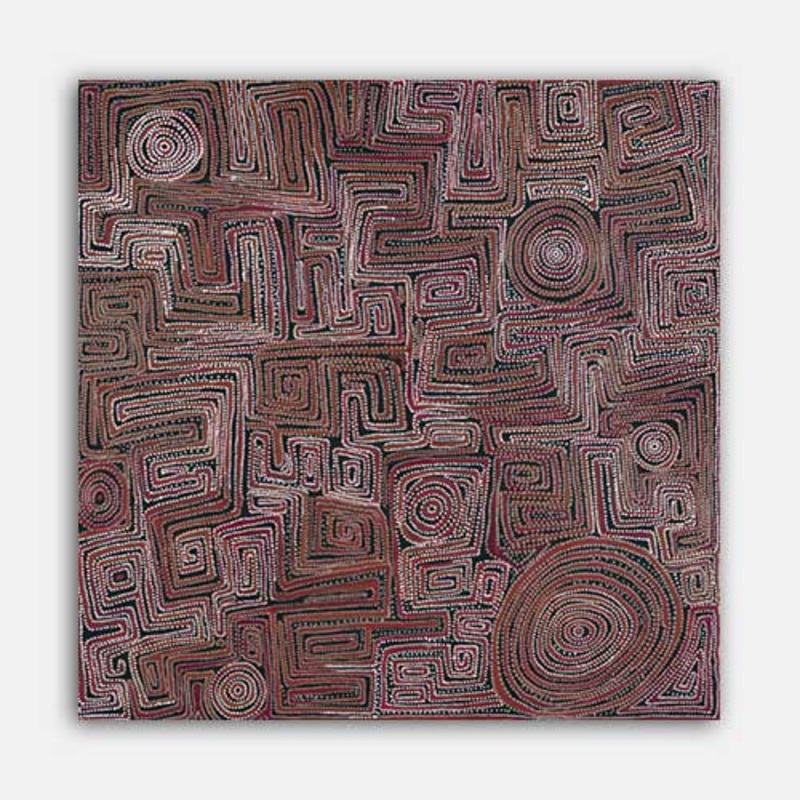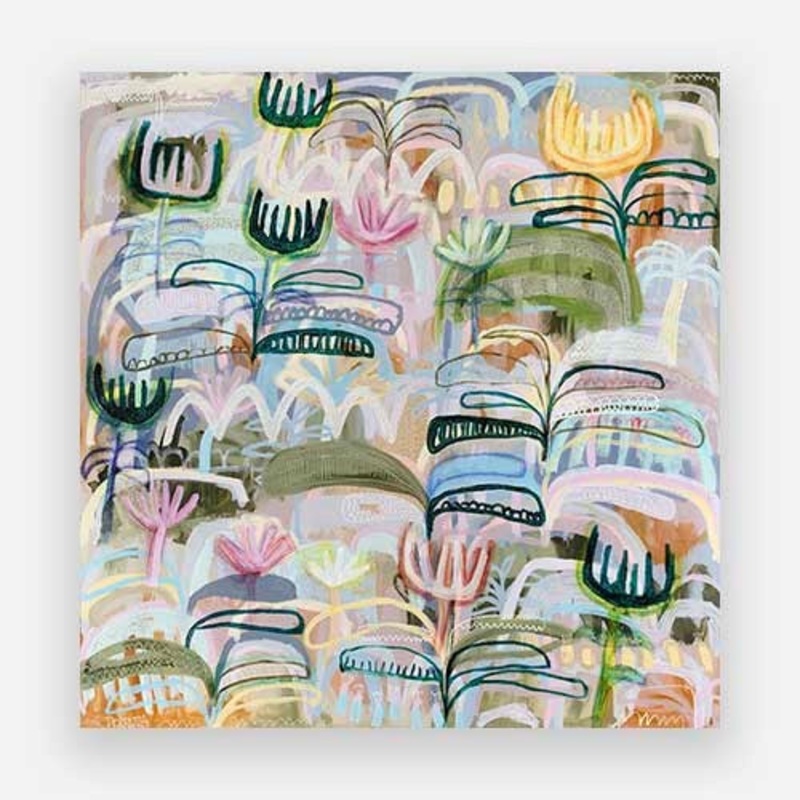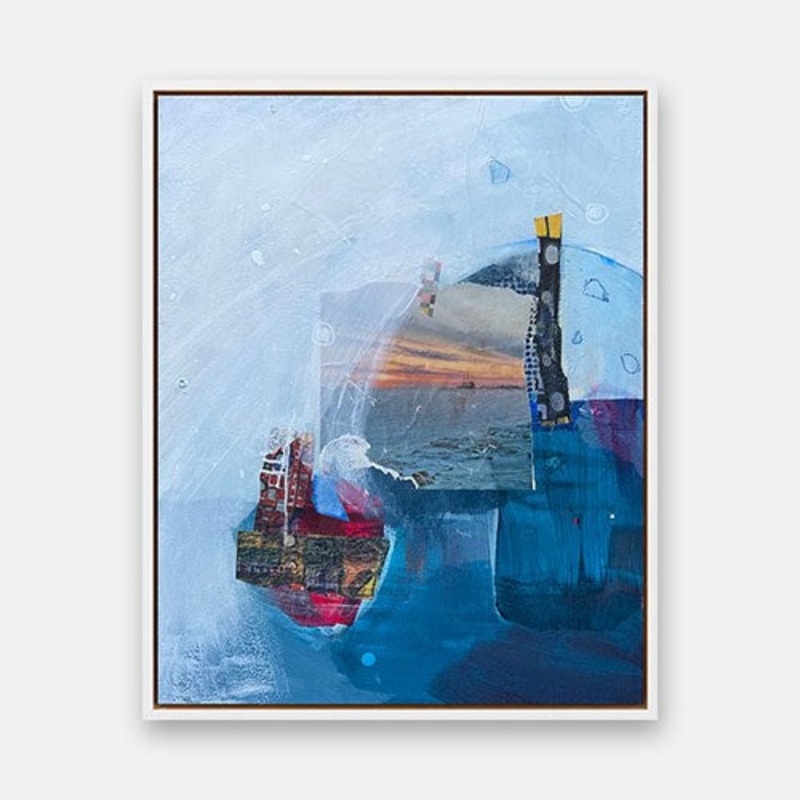Mina Mina Jukurrpa (Mina Mina Dreaming) 07
Original Art Mina Mina is an extremely important ceremonial site for Napangardi and Napanangka women that is located approximately 600kms west of Yuendumu, just east of Lake Mackay and the WA border. Mina Mina has a marluri (salt lake or claypan) that is u
Original Art
Mina Mina is an extremely important ceremonial site for Napangardi and Napanangka women that is located approximately 600kms west of Yuendumu, just east of Lake Mackay and the WA border.
Mina Mina has a marluri (salt lake or claypan) that is usually dry, without water. There are also several mulju (soakages), sandhills, and a large stand of kurrkara (desert oaks). The Mina Mina Jukurrpa is an important source of Warlpiri ritual knowledge and social organization, particularly relating to the different roles performed by men and women.
The kirda (owners) of this country are Napangardi/Napanangka women and Japangardi/Japanangka men, who can depict portions of the Mina Mina Jukurrpa in their paintings. The artists mother, Dorothy Napangardi (c.19562013) painted Mina Mina and has passed down her Jukurrpa stories to her children and asked them to continue to paint for her.
There are a number of different components of the Mina Mina Jukurrpa; artists usually choose to depict one particular aspect. These can include karnta (women), karlangu (digging sticks), majardi (hairstring skirts/tassels), ngalyipi (snakevine), jintiparnta (desert truffle), and kurrkara (desert oak).
In ancestral times a group of karnta (women) traveled from Mina Mina on an epic journey to the east. These ancestral women danced at Mina Mina and karlangu (digging sticks) rose up out of the ground. They collected these digging sticks and started travelling to the east. They carried their digging sticks over their shoulders, and they were adorned with majardi (hairstring belts), white feathers, and necklaces made from yinirnti (bean tree) seeds.
They travelled east from Mina Mina, dancing, digging for bush tucker, and creating many places as they went. As they went east, they passed through Kimayi (a stand of kurrkara (desert oak)). They passed through sandhill country where the yarla(bush potato or big yam) ancestors from Yumurrpa and the ngarlajiyi (pencil yam or small yam) ancestors from Yumurrpa were engaged in a huge battle over women. This battle is also a very important Warlpiri Jukurrpa narrative. The women went on to Janyinki and stopped at Wakakurrku (Mala Bore), where they stuck their digging sticks in the ground.
These digging sticks turned into mulga trees, which still grow at Wakakurrku today. The women then went on to Lungkardajarra (Rich Bore), where they looked back towards their country in the west and started to feel homesick for what theyd left behind.The women split up at Lungkardajarra. Some of them travelled eastwards to Yarungkanyi (Mount Doreen) andkept going east.
They passed through Coniston in Anmatyerre country, and then went on to Alcoota and Aileron and beyond. The othergroup of women travelled northwards from Lungkardajarra to Karntakurlangu. These women stopped at Karntakurlangu to dig for wardapi (sand monitor/goanna) and jintiparnta (desert truffle) before going further north. Both groups eventually got so homesick for their desert oak country in the west that they went all the way back to Mina Mina, where they stayed for good. The dots in this painting represent the women as they walked and danced across the country.
Please note: Original paintings on canvas are firmly wrapped around stretcher bars, also known as ‘stretched’. For any international shipments (outside of Australia), these paintings will be shipped unstretched and rolled to ensure their safe delivery. Pleasecontact us for any enquiries.
Additionally, this unique painting may also be available to purchase in-store. Should it be sold to an in-store buyer prior to an online sale, we will promptly contact you to arrange a refund and discuss alternative art options.






Reviews
There are no reviews yet.